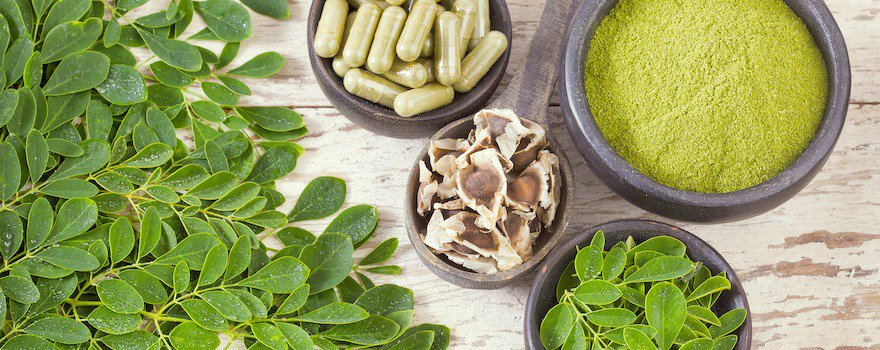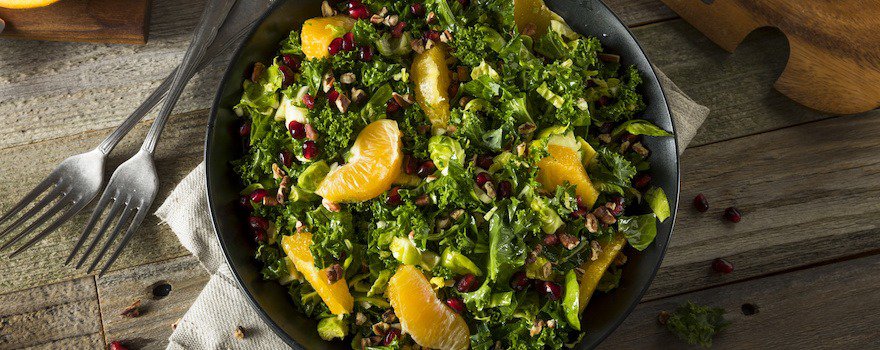Contrary to what one might think, inflammation is not necessarily a bad thing. The inflammatory response is even a good sign : it means that our body is getting rid of pathogens and that it sets up a protective mechanism.
Some nutrients (vitamins, minerals, trace elements…) act as anti-inflammatories. They thus help reduce inflammation and relieve associated symptoms.
When you want to avoid medications such as aspirin, or reduce their use, these nutrients are interesting options to prevent or reduce inflammation.
Here is our top 5 of the best natural anti-inflammatories. To understand inflammatory mechanisms and how certain nutrients act against inflammation, read on after the list!
1. Turmeric

Detoxifying, antioxidant, anti-stress and antidepressant, the turmeric (Curcuma longa) is also a powerful natural anti-inflammatory. A flagship plant of Ayurvedic medicine, its rhizome contains curcumin, a yellow-orange pigment capable of effectively fighting inflammation.
In addition to playing a protective role, curcumin acts within the inflammatory process. It first blocks the protein NF-κB which, if dysfunctional, can lead to an excessive inflammatory and immune response. Curcumin then inhibits the activity of the molecules responsible for inflammation.
Consuming turmeric is particularly useful to relieve pain related to arthritis and osteoarthritis, rheumatism, or other chronic inflammatory diseases.
Turmeric can be consumed as a dietary supplement, most often in capsules. But it is also possible to cook with fresh or powdered turmeric : don’t forget that turmeric is above all a culinary spice ! Its warm, peppery taste pairs very well with vegetables, white meats, fish, and shrimp.
You can also make a delicious turmeric/lemon infusion without forgetting a pinch of cinnamon.
2. Ginger

Alleged aphrodisiac, the ginger (Zingiber officinale) mainly contributes to the reduction of inflammation. Native to India, it produces rhizomes rich in gingerol, shogaol, and paradol. Behind these funny names lie pungent compounds with anti-inflammatory and pain-relieving benefits.
Gingerol, the main active compound of ginger, protects cells against inflammation and stimulates immune system functions. At the same time, it counteracts joint pain. That is why ginger is a food of choice for relieving arthritis and inflammatory rheumatism.
Ginger can also reduce muscle inflammation caused by physical activity or painful menstrual periods.
Fresh ginger has a spicy taste and a lemony aroma. If you wish to use fresh rhizome, you can for example make a refreshing smoothie apple/banana/ginger. As a spice, it will enhance both savory and sweet dishes.
Autre idée pour consommer du gingembre : concocter une infusion hivernale. Laissez infuser 1 cuillère à café de gingembre en poudre dans une tasse d’eau chaude pendant 20 minutes.
3. Moringa

The moringa (Moringa oleifera) is a tree whose various parts are used in traditional Indian medicine. Recognized as an energizing remedy, antioxidant and hypoglycemic (it lowers blood sugar levels), moringa also has anti-inflammatory properties.
It owes this property to the isothiocyanates and the quercetin it contains. Quercetin is a flavonoid known to reduce inflammation and the immune response, particularly in allergic reactions. As for isothiocyanates, they are organo-sulfur compounds capable of relieving chronic inflammation by regulating inflammatory biomarkers.
Available as a dietary supplement, you can also find moringa powder. It has a slightly peppery and lemony taste. You can add moringa powder to your juices, smoothies, and yogurts.
4. Green tea

We all know the benefits of green tea (Camellia sinensis) on metabolism, weight, or the body’s detoxification. But did you know that green tea also has anti-inflammatory properties? Its richness in polyphenols makes it useful for preventing inflammation and relieving symptoms such as joint pain.
Green tea also contains epigallocatechin gallate (EGCG), an anti-inflammatory flavanol that reduces cytokine production. Finally, the action of green tea is complemented by its other components: vitamin A, vitamin E, minerals, amino acids…
Green tea can be enjoyed in its most classic form : as a hot or iced drink. But you can also incorporate green tea leaves into sweet recipes like rice pudding, a cake, or panna cotta. We also invite you to discover the matcha, a green powder made by grinding green tea leaves.
5. Green vegetables

And yes : most green vegetables have an anti-inflammatory effect and can help you reduce your aspirin intake. This is especially the case for cruciferous vegetables such as broccoli, cauliflower, Brussels sprouts and kale. These crucifers all have one thing in common : they contain sulforaphane. In addition to being an antioxidant, this organosulfur compound also reduces the production of pro-inflammatory cytokines.
You can enjoy green vegetables in countless ways ! While most cabbages are eaten cooked, some can also be eaten raw, such as kale (Brassica oleracea) which has a very mild flavor. Prepare it in salads, soups, smoothies and, why not, as chips!
Nutrients that fight inflammation
What is inflammation?
When a muscle is overused, for example, it sends a nerve signal to the brain to protect itself. Once this information is processed, muscle inflammation and the repair process begin, resulting in warmth, redness, or swelling in the injured muscle.

The causes of inflammation are varied. Thus, the body can trigger an inflammatory reaction in cases of:
- Intrusion of a pathogen (bacteria, viruses, fungi)
- Physical injury, or trauma
- Detection of a “false threat” (allergy)
- Autoinflammatory or autoimmune diseases
As for the symptoms of inflammation (grouped under the name inflammatory syndrome), they can also be of various kinds. In general, inflammation causes:
- Severe fatigue
- Redness
- Swelling
- Pain
- A sensation of warmth
- Loss of appetite
Magnesium for muscle or chronic inflammation
Magnesium is a nutrient closely linked to the process of muscle inflammation. That’s why a magnesium deficiency often results in cramps and muscle pain. This nutrient is valuable for reducing both transient and chronic inflammation.
Magnesium regulates the concentration of calcium in the body. Indeed, when it is in excess and accumulates in the body, calcium becomes undesirable and promotes inflammation. Magnesium therefore helps maintain the right balance.
Magnesium has the advantage of being present in many foods. Nuts, seafood, vegetables, and even cocoa powder are excellent dietary sources of magnesium. It can also be useful to choose a mineral water rich in magnesium.
Vitamin A regulates the inflammatory process
Vitamin A, also called retinol, acts directly on the inflammatory process and more specifically on MCP-1 (monocyte chemoattractant protein 1). Secreted naturally by the body, it is partly responsible for inflammation. MCP-1 is, for example, involved in rheumatoid arthritis, a chronic inflammatory disease that affects the joints.
Adequate vitamin A intake therefore helps regulate MCP-1 secretion and also strengthen the immune system, which triggers the body’s defense mechanisms in the event of injury or infection.
Red bell peppers, carrots, cod liver oil, dairy products, and eggs are recommended to help boost vitamin A intake.
Vitamin E protects and reduces pain
Like vitamin A, vitamin E acts at the heart of the inflammatory process by reducing the levels of cytokines, molecules involved in inflammation. Pro-inflammatory cytokines are secreted by immune system cells. While they play a crucial role in the healing process, they can also amplify the inflammatory reaction. Vitamin E therefore helps reduce cytokine levels to control inflammation.
Vitamin E is present in significant amounts in nuts, in certain vegetable oils (wheat germ oil, sunflower oil, peanut oil, olive, canola or corn oil), in spinach, in mango or kiwi.



